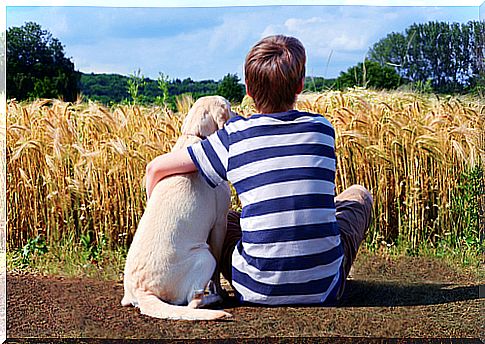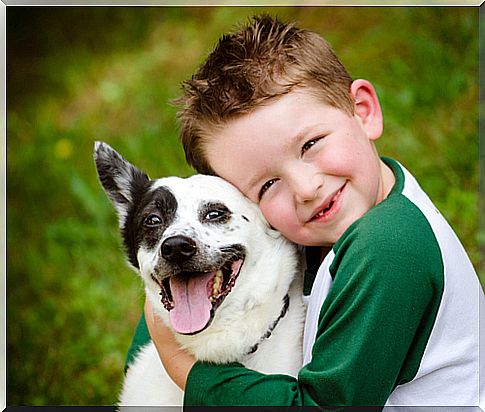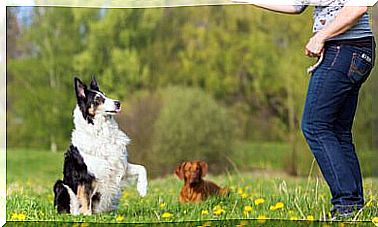How Dogs Help Children With Autism

Dogs have been man’s best friend for centuries. There is no city or country without dogs in the world. We are totally used to them, and they to us. We can’t even imagine a world without dogs. Dogs come to meet us in everyday life. They even help us when we have health problems, especially when it comes to children.
Growing up with a dog is a wonderful experience. Sometimes, however, there are particular situations that lead us to think that perhaps it is not the case to have a pet: it is only a superficial judgment. In this article, we will talk about how dogs help children with autism.
What is autism and how do pets help us?

In general terms, autism is a neuronal condition. It is a pervasive developmental disorder that compromises three main areas of the child’s psychic development (the social and relational area, the communicative and the interests area) and which lasts for life. “Autism” is an umbrella term that refers to a group of brain development disorders that can lead to severe socialization disorders. Those who suffer, for example, of Asperger syndrome have serious difficulties in the interaction with the surrounding world.
The causes of autism are still unknown today. It is thought to depend on genetic and environmental factors. There is also no specific cure for autism. All therapies aim to maximize the individual’s abilities so that he can have a life that is as normal and as independent as possible. We use treatments that focus on language, motor skills, social skills and medications that can control some symptoms.
According to research conducted by the University of Missouri, children with autism who have a pet develop more social skills than children who do not. Social skills increase especially if the pet is a dog.
All of this may be due to the affective need of dogs and their way of expressing affection. In fact, other pets may be more reluctant, or can’t stand being touched constantly. Dogs are very effusive in their displays of affection and are always on the lookout for attention and cuddles. Let’s see now what are the other positive aspects.
More social skills
As we said in the previous paragraph, the study has shown that children with autism and who live with any pet, react positively to the processes of social therapies – obviously it always depends on the conditions and characteristics of the disorder. Interaction with dogs proved highly beneficial. It increases assertiveness and social skills. The dog becomes a cog in the child’s social dynamics, activities and interests.
They compromise more with family members

Since parents are at the same time responsible for the dog and the child, they can resort to games with the dog and use them as a bridge between the needs of both. Walks and trips are the ideal pretext to get in tune with the child. In these recreational occasions the child is exposed to situations in which different playful and interactional dynamics are involved.
Children with autism have a hard time getting close to strangers. It has been shown that when a stranger starts a conversation by talking about the dog, the chances of getting a response from the child increase.
Understanding attitudes and behaviors
Perhaps one of the most complicated situations for a child with autism is deciphering human attitudes and behaviors, such as gestures or body language. Through constant interaction with the dog, children can begin to understand. Interpretation starts from a basic level (the animal level) and reaches the more complex structures of language.
Children are interested in dogs and are intrigued by them
The child develops a network of interests that revolve around the animal. He wants to know and know as much about the dog as possible. For children with autism the dog is an important topic, as is everything related to the animal. All this streamlines the socialization process because the door of the topics to be shared is always open. We can say that the dog is a real “social lubricant”.









